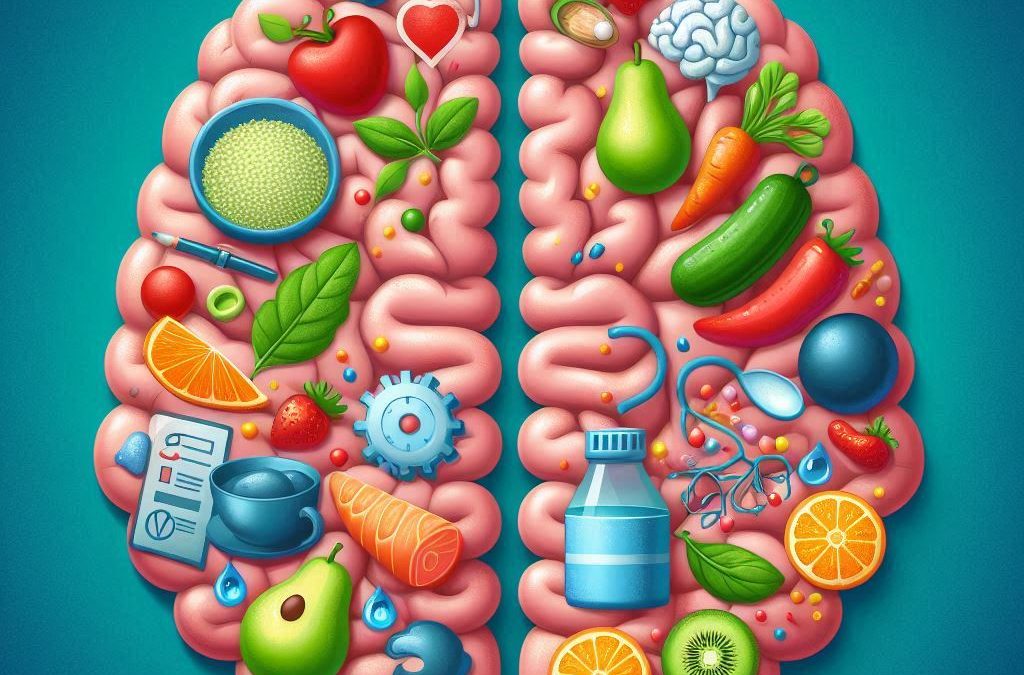
by admin | Mar 14, 2025 | Uncategorized
Engaging in sports is a fantastic way to stay fit, build teamwork, and have fun. However, sports can also put you at risk of injuries that can sideline you for weeks or even months. Preventing sports injuries should be a priority for athletes of all levels, from weekend warriors to professional competitors. Here are some expert tips from a physiotherapist to help you stay injury-free and enjoy your favorite sports safely.
1. Warm Up Properly
A proper warm-up is crucial for preparing your body for the physical demands of your sport. A good warm-up increases blood flow to your muscles, raises your body temperature, and enhances joint flexibility. Start with 5-10 minutes of light aerobic exercise such as jogging or jumping jacks. Follow this with dynamic stretches that mimic the movements of your sport, such as leg swings, arm circles, and lunges.
2. Focus on Strength and Conditioning
Building a strong, well-conditioned body is one of the best ways to prevent sports injuries. Strength training enhances muscle support around joints, while conditioning improves overall endurance and resilience. Incorporate exercises that target major muscle groups and those specific to your sport. For example, squats and lunges for runners, and shoulder presses and rotator cuff exercises for swimmers. A balanced workout routine that includes strength training, cardiovascular exercise, and flexibility work can help you perform better and reduce injury risks.
3. Use Proper Technique
Using proper technique is essential for avoiding injuries. Poor form can place unnecessary stress on your muscles and joints, leading to overuse injuries. If you’re new to a sport or trying to improve your skills, consider working with a coach or trainer who can teach you the correct techniques. Regularly reviewing and refining your form can help you stay efficient and reduce the likelihood of injuries.
4. Wear Appropriate Gear
Wearing the right gear can make a significant difference in preventing injuries. This includes appropriate footwear, protective equipment, and sport-specific gear. Shoes should provide adequate support and be appropriate for the type of activity you’re doing. For contact sports, use protective gear such as helmets, pads, and mouthguards. Ensure that all equipment fits well and is in good condition.
5. Listen to Your Body
Your body often gives warning signs before an injury occurs. Listening to these signals and responding appropriately can prevent minor issues from becoming major problems. If you feel pain, discomfort, or unusual fatigue, take a break and assess your condition. Rest and seek professional advice if necessary. Ignoring pain and pushing through can exacerbate injuries and lead to longer recovery times.
6. Stay Hydrated and Maintain a Healthy Diet
Proper hydration and nutrition are vital for keeping your body in top condition. Dehydration can impair your performance and increase the risk of muscle cramps and injuries. Drink plenty of water before, during, and after exercise. Eating a balanced diet rich in vitamins, minerals, and protein supports muscle repair and overall health. Consider consulting a nutritionist for a diet plan tailored to your athletic needs.
7. Incorporate Flexibility and Mobility Work
Flexibility and mobility exercises help maintain the range of motion in your joints and muscles, reducing the risk of strains and sprains. Incorporate stretching routines into your daily schedule, focusing on areas that are heavily used in your sport. Activities such as yoga and Pilates can also enhance flexibility, balance, and core strength.
Conclusion
Preventing sports injuries involves a combination of proper preparation, technique, and self-care. By incorporating these tips into your training routine, you can minimize the risk of injuries and enjoy your sport safely. Remember, if you do experience an injury, consult a physiotherapist for a tailored rehabilitation plan to get you back on track. With the right approach, you can stay healthy, perform better, and make the most of your athletic pursuits.

by admin | Mar 7, 2025 | Uncategorized
In today’s fast-paced and technology-driven world, many of us spend the majority of our waking hours in the workplace, often sitting at desks and staring at screens for extended periods. Unfortunately, prolonged sitting and poor ergonomics can lead to a variety of musculoskeletal issues, including back pain, neck strain, and repetitive strain injuries. As occupational therapists, we understand the importance of creating a safe and ergonomic workspace to promote health, comfort, and productivity. In this blog post, we’ll share some occupational therapy tips for enhancing workplace ergonomics and reducing the risk of workplace-related injuries.
Understanding Workplace Ergonomics
Ergonomics is the science of designing and arranging the workplace environment to fit the needs of the worker, rather than forcing the worker to adapt to the environment. Good ergonomics can help prevent musculoskeletal disorders and improve overall well-being by promoting proper posture, reducing strain on the body, and optimizing efficiency and comfort.
Occupational Therapy Tips for Enhancing Workplace Ergonomics
1. Maintain Proper Posture
Encourage employees to sit up straight with their feet flat on the floor and their knees at a 90-degree angle. Their back should be supported by the chair’s backrest, and their shoulders should be relaxed. Avoid slouching or leaning forward, as this can strain the back and neck muscles.
2. Adjust Chair Height and Position
Ensure that employees’ chairs are adjusted to the proper height so that their thighs are parallel to the ground and their feet are flat on the floor. The height of the chair’s armrests should allow the employee’s arms to rest comfortably while typing or using the mouse.
3. Position Computer Monitor at Eye Level
The computer monitor should be positioned directly in front of the employee at eye level, about an arm’s length away. This helps reduce neck strain and eye fatigue by promoting a neutral head position. Consider using a monitor stand or adjustable monitor arm to achieve the desired height and angle.
4. Use Proper Keyboard and Mouse Placement
The keyboard and mouse should be positioned close together at the same height, with the keyboard centered in front of the employee. Wrists should be kept straight while typing, and elbows should be close to the body. Consider using an ergonomic keyboard and mouse to reduce strain on the hands and wrists.
5. Take Regular Breaks and Stretch
Encourage employees to take short breaks throughout the day to stretch and move around. Simple stretches can help relieve muscle tension and improve circulation. Consider implementing a reminder system or scheduling group stretch breaks to promote healthy habits.
6. Provide Ergonomic Accessories
Consider providing employees with ergonomic accessories such as footrests, lumbar supports, and wrist rests to enhance comfort and support. These accessories can help reduce strain on the body and promote proper alignment while working.
7. Educate Employees on Ergonomics
Provide training and educational materials on proper ergonomics and workstation setup. Empower employees to take an active role in their own health and well-being by teaching them how to recognize and address ergonomic risk factors.
Conclusion
By implementing these occupational therapy tips for enhancing workplace ergonomics, employers can create a safer, more comfortable, and more productive work environment for their employees. Investing in ergonomic design and promoting healthy work habits not only reduces the risk of workplace-related injuries but also improves employee satisfaction, morale, and overall performance. As occupational therapists, we play a crucial role in advocating for workplace ergonomics and empowering individuals to take control of their health and well-being in the workplace.

by admin | Jan 31, 2025 | Uncategorized
In recent years, plant-based diets have surged in popularity, driven by concerns about health, animal welfare, and environmental sustainability. Whether you’re considering going vegan or vegetarian for ethical reasons or simply want to explore the health benefits of a plant-centric diet, understanding how to build a balanced eating plan is key to ensuring you meet your nutritional needs. In this blog post, we’ll explore the fundamentals of plant-based nutrition and provide practical tips for creating a well-rounded vegan or vegetarian diet.
The Basics of Plant-Based Eating
Plant-based diets center around foods derived from plants, such as fruits, vegetables, grains, legumes, nuts, and seeds, while minimizing or eliminating animal products like meat, dairy, and eggs. When done thoughtfully, a plant-based diet can provide all the essential nutrients your body needs for optimal health.
Key Nutrients to Consider
While plant-based diets offer numerous health benefits, they may require extra attention to certain nutrients that are more abundant in animal products. These include:
- Protein: Incorporate a variety of protein-rich plant foods such as beans, lentils, tofu, tempeh, seitan, edamame, quinoa, nuts, and seeds into your meals to ensure you meet your protein needs.
- Iron: Opt for iron-rich plant foods like leafy greens (spinach, kale), lentils, beans, tofu, tempeh, quinoa, fortified cereals, and pumpkin seeds. Pairing these foods with a source of vitamin C, such as citrus fruits or bell peppers, can enhance iron absorption.
- Calcium: Include calcium-fortified plant milks, tofu, fortified orange juice, leafy greens, almonds, tahini, and figs in your diet to support bone health.
- Omega-3 Fatty Acids: Incorporate plant sources of omega-3s like flaxseeds, chia seeds, hemp seeds, walnuts, and algae-based supplements to support heart and brain health.
- Vitamin B12: Since vitamin B12 is primarily found in animal products, consider taking a B12 supplement or consuming fortified foods like plant milks, breakfast cereals, and nutritional yeast to meet your needs.
Building Balanced Plant-Based Meals
Creating balanced plant-based meals involves combining a variety of nutrient-dense foods to ensure you get all the essential nutrients. Aim to include a source of protein, complex carbohydrates, healthy fats, and plenty of colorful fruits and vegetables in each meal. Here’s a sample day of plant-based eating:
- Breakfast: Overnight oats topped with mixed berries, chia seeds, and almond butter.
- Lunch: Quinoa salad with black beans, roasted vegetables, avocado, and a squeeze of lime.
- Snack: Hummus with carrot sticks and whole grain crackers.
- Dinner: Stir-fried tofu and mixed vegetables served over brown rice with a side of steamed broccoli.
Embracing Variety and Flexibility
One of the joys of plant-based eating is the abundance of delicious and nutritious foods to explore. Experiment with new ingredients, cuisines, and recipes to keep your meals exciting and satisfying. Don’t forget to listen to your body’s hunger and fullness cues and make adjustments as needed to ensure you’re meeting your nutritional needs.
Conclusion
A well-planned plant-based diet can provide all the nutrients your body needs for optimal health while offering numerous benefits for both you and the planet. By focusing on nutrient-rich whole foods, incorporating a variety of plant-based protein sources, and embracing flexibility and variety in your meals, you can enjoy the delicious and satisfying benefits of plant-based eating while nourishing your body from the inside out. Cheers to vibrant health and delicious plant-powered meals!

by admin | Jan 24, 2025 | Uncategorized
VO2 max, or maximal oxygen uptake, is a key indicator of cardiovascular fitness and aerobic endurance. It measures the maximum amount of oxygen your body can utilize during intense exercise. This metric is crucial for athletes and fitness enthusiasts as it reflects the efficiency of the cardiovascular and respiratory systems in delivering oxygen to muscles during physical activity. Understanding VO2 max and how to improve it can significantly enhance athletic performance and overall fitness.
What is VO2 Max?
- Definition: VO2 max represents the maximum volume of oxygen (in milliliters) that an individual can consume per minute per kilogram of body weight during peak exercise. It is expressed as mL/kg/min.
- Physiological Importance: VO2 max is a measure of the body’s ability to take in, transport, and utilize oxygen. Higher VO2 max values indicate a greater capacity for aerobic energy production, which is essential for endurance sports and activities.
- Determinants: Several factors influence VO2 max, including genetics, age, sex, training status, and altitude. While genetics set an upper limit, training can significantly improve VO2 max within an individual’s genetic potential.
- Testing VO2 Max: VO2 max is typically measured in a laboratory setting using a graded exercise test (GXT) on a treadmill or cycle ergometer, where exercise intensity gradually increases until exhaustion. Portable field tests, such as the Cooper 12-minute run or beep test, can provide estimates but are less precise.
How to Improve VO2 Max
- Endurance Training: Consistent aerobic exercise is fundamental for improving VO2 max. Activities such as running, cycling, swimming, and rowing enhance cardiovascular and respiratory efficiency. Aim for at least 150 minutes of moderate-intensity or 75 minutes of high-intensity aerobic exercise per week.
- High-Intensity Interval Training (HIIT): HIIT involves alternating between short bursts of intense exercise and periods of rest or low-intensity exercise. HIIT is highly effective for increasing VO2 max as it challenges the cardiovascular system and stimulates adaptations in oxygen delivery and utilization.
- Long, Slow Distance (LSD) Training: LSD training involves prolonged sessions of moderate-intensity exercise, which helps build aerobic endurance and enhances the efficiency of energy production systems. This type of training increases mitochondrial density and capillarization in muscles, improving oxygen extraction.
- Strength Training: Incorporating strength training can complement aerobic training by improving muscle efficiency and overall fitness. Stronger muscles use oxygen more efficiently, contributing to improved VO2 max.
- Altitude Training: Training at high altitudes can stimulate adaptations that enhance oxygen delivery and utilization. The lower oxygen levels at altitude force the body to produce more red blood cells, which can improve VO2 max when returning to sea level.
- Consistency and Progression: Consistency in training is key to improving VO2 max. Gradually increasing the intensity and volume of exercise allows the body to adapt and improve its oxygen utilization capacity.
Practical Tips for Improving VO2 Max
- Varied Workouts: Incorporate a mix of continuous, steady-state cardio sessions and HIIT workouts to stimulate different physiological adaptations.
- Monitor Progress: Track your workouts and VO2 max improvements using fitness apps or wearable devices that estimate VO2 max based on heart rate and exercise data.
- Balanced Nutrition: Fuel your body with a balanced diet rich in carbohydrates, proteins, and fats to support training and recovery. Proper hydration is also crucial for maintaining performance during exercise.
- Adequate Rest: Ensure sufficient rest and recovery between workouts to prevent overtraining and allow for physiological adaptations.
- Professional Guidance: Consider working with a coach or fitness professional to design a training program tailored to your goals and fitness level.
Conclusion
VO2 max is a critical measure of aerobic capacity and overall fitness, reflecting the body’s ability to utilize oxygen during intense exercise. By engaging in consistent endurance training, incorporating HIIT, and maintaining a well-rounded fitness regimen, individuals can significantly improve their VO2 max. Understanding and enhancing VO2 max can lead to better athletic performance, increased stamina, and improved health outcomes. Prioritizing these strategies will help you reach your fitness potential and achieve your athletic goals.

by admin | Jan 17, 2025 | Uncategorized
In recent years, research has increasingly highlighted the intricate relationship between our gut health and mental well-being. The gut-brain connection, also known as the microbiota-gut-brain axis, refers to the communication network between the gut, the brain, and the trillions of microbes that inhabit our digestive system. Emerging evidence suggests that the health of our gut microbiota plays a crucial role in regulating mood, cognition, and even behavior. In this blog post, we’ll explore the fascinating link between diet, gut health, and mental health, and provide practical tips for supporting a healthy gut-brain axis through nutrition.
Understanding the Gut-Brain Connection
The gut is often referred to as our “second brain” due to its extensive network of neurons and neurotransmitters, which communicate with the central nervous system. This bidirectional communication pathway allows signals to travel between the gut and the brain, influencing everything from mood and appetite to stress response and immune function.
The Role of Diet in Gut Health
Diet plays a significant role in shaping the composition and diversity of our gut microbiota. Consuming a diet rich in fiber, fruits, vegetables, and fermented foods provides the nutrients and prebiotics needed to support a healthy balance of beneficial bacteria in the gut. On the other hand, a diet high in processed foods, sugar, and unhealthy fats can disrupt the gut microbiota and contribute to inflammation and dysbiosis.
How Diet Affects Mental Health
The health of our gut microbiota has been linked to various mental health conditions, including depression, anxiety, and stress. Research suggests that an imbalance in gut bacteria, known as dysbiosis, may contribute to inflammation and alterations in neurotransmitter function, leading to changes in mood and behavior.
Practical Tips for Supporting Gut Health and Mental Well-Being
- Eat a Diverse Diet: Aim to consume a wide variety of fruits, vegetables, whole grains, legumes, nuts, seeds, and fermented foods to promote a diverse and resilient gut microbiota.
- Include Prebiotic Foods: Incorporate prebiotic-rich foods such as garlic, onions, leeks, asparagus, bananas, and oats into your diet to nourish beneficial bacteria in the gut.
- Prioritize Fermented Foods: Enjoy fermented foods like yogurt, kefir, sauerkraut, kimchi, and kombucha regularly to introduce probiotic bacteria into your gut and support digestive health.
- Limit Processed Foods: Minimize your intake of processed foods, refined sugars, artificial sweeteners, and unhealthy fats, which can disrupt the gut microbiota and contribute to inflammation.
- Stay Hydrated: Drink plenty of water throughout the day to support digestion, nutrient absorption, and overall gut health.
- Manage Stress: Practice stress-reducing techniques such as mindfulness, meditation, deep breathing, yoga, and spending time in nature to support a healthy gut-brain axis and improve mental well-being.
Conclusion
The gut-brain connection underscores the importance of nourishing our bodies with a diet that supports gut health and mental well-being. By prioritizing whole, nutrient-rich foods, including prebiotics and probiotics, and minimizing processed foods and stress, we can promote a healthy balance of gut bacteria and support optimal mental health. Remember, what you eat not only affects your physical health but also influences your mood, cognition, and emotional well-being. So, choose foods that nourish both your body and your mind, and cultivate a thriving gut-brain axis for a happier, healthier life.

by admin | Jan 10, 2025 | Uncategorized
Macronutrients are the building blocks of a balanced diet, providing the energy and nutrients our bodies need to function optimally. In this blog post, we’ll delve into the fascinating world of macronutrients, exploring their roles in the body, sources in the diet, and how to strike a healthy balance for overall well-being.
Protein: The Body’s Building Blocks
Protein is an essential macronutrient responsible for building and repairing tissues, synthesizing hormones and enzymes, and supporting immune function. It’s made up of amino acids, which are often referred to as the “building blocks of protein.” There are 20 different amino acids, nine of which are considered essential because the body cannot produce them and must obtain them from the diet.
Sources of protein include both animal and plant-based foods. Animal sources such as meat, poultry, fish, eggs, and dairy are complete proteins, meaning they provide all nine essential amino acids. Plant-based sources like beans, lentils, tofu, tempeh, nuts, seeds, and grains can also provide ample protein, although they may be lacking in one or more essential amino acids. However, by combining different plant protein sources throughout the day, you can easily meet your protein needs on a vegetarian or vegan diet.
Carbohydrates: Fuel for the Body and Brain
Carbohydrates are the body’s primary source of energy, providing fuel for both physical activity and brain function. They come in various forms, including sugars, starches, and fiber. While simple carbohydrates like table sugar and refined grains provide quick energy, complex carbohydrates found in whole grains, fruits, vegetables, and legumes offer sustained energy and essential nutrients.
Despite the misconceptions surrounding carbs, they play a crucial role in a balanced diet and should not be demonized. Focus on consuming whole, minimally processed carbohydrates to support overall health and well-being.
Fats: Essential for Health and Vitality
Fats are another vital macronutrient that often gets a bad rap. While it’s true that some fats, like trans fats found in processed and fried foods, can be detrimental to health, others are essential for proper function and should be included in a balanced diet.
Healthy fats, such as those found in avocados, nuts, seeds, olive oil, and fatty fish, provide essential fatty acids that the body cannot produce on its own. These fats support brain health, hormone production, and nutrient absorption, making them an essential component of a healthy diet.
Striking a Balance for Optimal Health
Achieving a balanced intake of macronutrients is key to supporting overall health and well-being. While individual needs may vary based on factors like age, gender, activity level, and health status, a general guideline is to aim for a diet that includes:
- About 20-35% of calories from protein, focusing on lean sources.
- 45-65% of calories from carbohydrates, prioritizing whole, minimally processed options.
- 20-35% of calories from fats, emphasizing healthy sources like nuts, seeds, and olive oil.
By focusing on nutrient-dense whole foods and striking a balance between protein, carbs, and fats, you can nourish your body and support optimal health and vitality. Remember, it’s not about restriction or deprivation but rather about enjoying a variety of delicious and nutritious foods that fuel your body and nourish your soul. Cheers to a balanced diet and a healthier, happier you!







